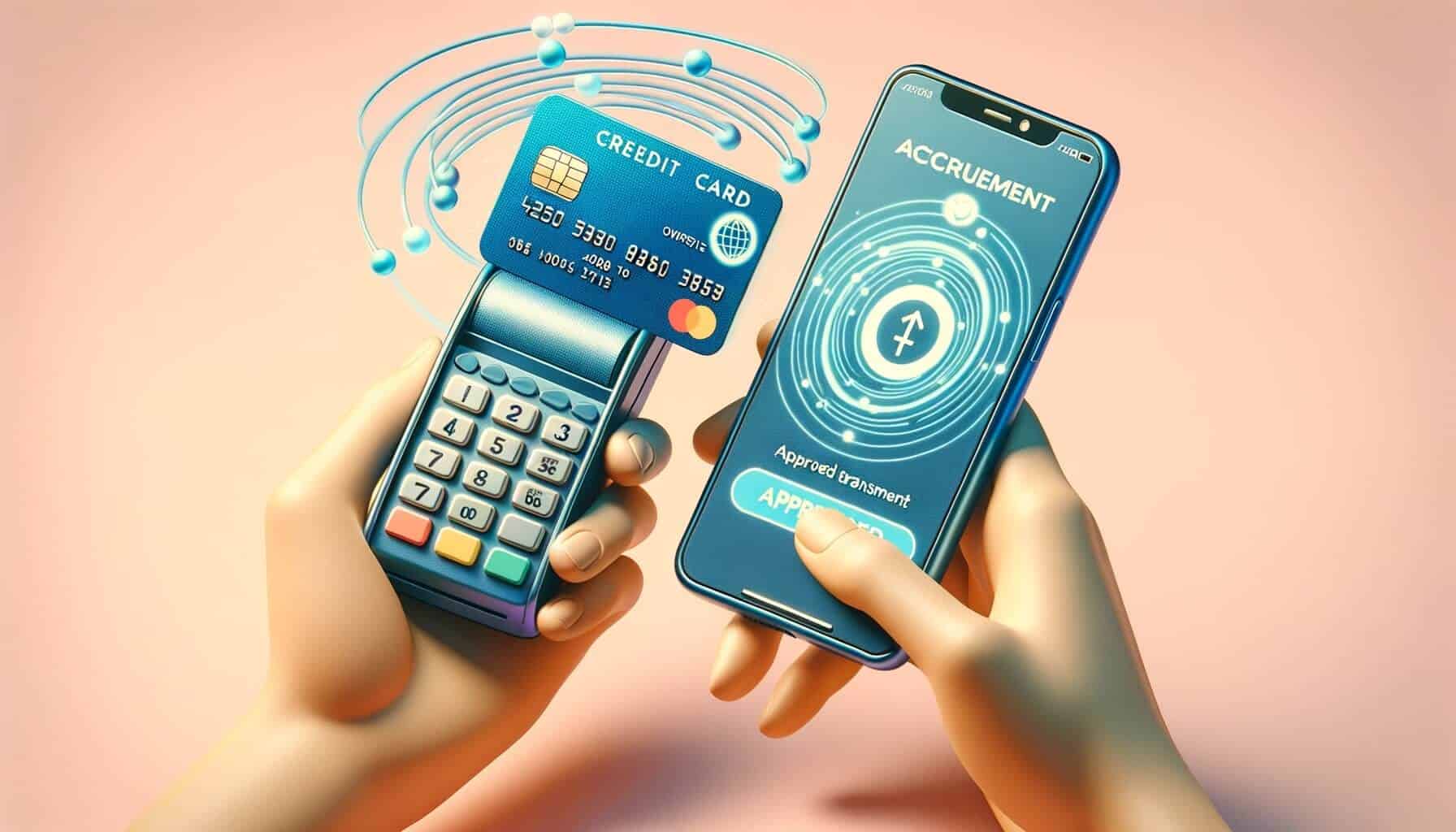
By Harriet Forster January 18, 2025
In today’s digital age, accepting credit cards over the phone has become an essential part of running a successful business. Whether you operate a small business or a large corporation, providing customers with the convenience of making payments over the phone can significantly enhance their overall experience. However, it is crucial to understand the basics of accepting credit cards over the phone to ensure a seamless and secure transaction process.
Accepting credit cards over the phone involves collecting payment information from customers and processing the transaction manually. This method allows businesses to accept payments without the need for a physical card or an in-person transaction. By accepting credit cards over the phone, businesses can expand their customer base and cater to individuals who prefer making purchases remotely.
Understanding the Basics of Accepting Credit Cards
Before diving into the technical aspects of accepting credit cards over the phone, it is crucial to understand the basics of how this payment method works. When a customer makes a purchase over the phone, their credit card information is manually entered into a secure system by the merchant. The merchant then processes the payment through a payment gateway, which securely transmits the transaction details to the customer’s credit card issuer for approval. Once the transaction is approved, the funds are transferred to the merchant’s account.
Setting Up a Merchant Account for Phone Payments

Before you can start accepting credit cards over the phone, you need to set up your business to facilitate this payment method. Here are some essential steps to follow:
1. Obtain a merchant account: To accept credit card payments, you need to establish a merchant account with a payment processor. This account will enable you to process credit card transactions and receive funds in your business bank account.
2. Choose a payment gateway: A payment gateway acts as a bridge between your business, the customer, and the payment processor. It securely transmits payment information and ensures that transactions are processed smoothly.
3. Acquire a virtual terminal: A virtual terminal is a web-based application that allows you to manually enter credit card information and process payments over the phone. It provides a user-friendly interface for inputting customer details and initiating transactions.
4. Train your staff: It is essential to train your staff on how to handle credit card transactions over the phone. They should be familiar with the virtual terminal, understand security protocols, and be able to assist customers effectively.
Choosing the Right Payment Gateway for Phone Transactions

Selecting the right payment processor is crucial for smooth and secure credit card transactions over the phone. Here are some factors to consider when choosing a payment processor:
1. Security: Look for a payment processor that prioritizes security and offers robust encryption and fraud prevention measures. This ensures that customer data is protected during the transaction process.
2. Compatibility: Ensure that the payment processor you choose is compatible with your virtual terminal and other systems you use for your business operations. Seamless integration between systems will streamline the payment process.
3. Pricing: Compare pricing structures and fees offered by different payment processors. Look for transparent pricing models that align with your business’s needs and budget.
4. Customer support: Consider the level of customer support provided by the payment processor. Responsive and knowledgeable support can be invaluable in resolving any issues that may arise during credit card transactions.
Ensuring Security and Compliance in Phone Credit Card Processing

Security and compliance are paramount when accepting credit cards over the phone. Here are some measures to ensure the safety of customer data and compliance with industry regulations:
1. PCI DSS compliance: The Payment Card Industry Data Security Standard (PCI DSS) sets guidelines for securely handling credit card information. Ensure that your business is compliant with these standards to protect customer data.
2. Encryption: Use encryption technology to secure credit card information during transmission. This ensures that sensitive data cannot be intercepted or accessed by unauthorized individuals.
3. Secure storage: Implement secure storage practices for customer data. Avoid storing credit card information unless necessary, and if you do, ensure it is stored in a secure and encrypted manner.
4. Employee training: Train your employees on security protocols and best practices for handling credit card information. This includes educating them on the importance of not sharing customer data and regularly updating passwords.
Step-by-Step Guide: Accepting Credit Cards Over the Phone
Now that you have a basic understanding of accepting credit cards over the phone and have set up your merchant account and payment gateway, let’s dive into a step-by-step guide on how to process phone payments efficiently and securely.
Step 1: Gather Customer Information
When a customer calls to make a purchase, gather all the necessary information, including their name, billing address, shipping address (if applicable), credit card number, expiration date, and CVV code. Ensure that the customer is aware of the information you are collecting and reassure them of the security measures in place.
Step 2: Verify Customer Identity
To prevent fraud, verify the customer’s identity by asking for additional information, such as their phone number or email address. You can also use address verification services or request a photocopy of their ID for high-value transactions.
Step 3: Enter Payment Details
Enter the customer’s payment details into your payment gateway or virtual terminal. Ensure that you are using a secure and encrypted connection to protect the customer’s information during transmission.
Step 4: Obtain Authorization
Once the payment details are entered, submit the transaction for authorization. The payment gateway will communicate with the customer’s credit card issuer to verify the card’s validity and the availability of funds. If the transaction is approved, you will receive an authorization code.
Step 5: Confirm the Transaction
After receiving the authorization code, confirm the transaction with the customer. Provide them with a receipt or confirmation number and inform them of any additional steps, such as shipping or delivery details.
Step 6: Settle the Transaction
At the end of the day or a specified settlement period, batch process all the authorized transactions and submit them for settlement. The funds will be transferred from the customer’s account to your merchant account.
Best Practices for Efficient and Effective Phone Credit Card Processing
To ensure efficient and effective phone credit card processing, consider implementing the following best practices:
1. Train your staff: Provide comprehensive training to your staff on how to handle phone payments securely and efficiently. This includes educating them on security protocols, customer verification techniques, and proper data entry procedures.
2. Use a virtual terminal: A virtual terminal is a web-based application that allows you to process phone payments securely from any computer with internet access. It eliminates the need for hardware terminals and provides flexibility for remote or mobile businesses.
3. Implement fraud detection tools: Utilize fraud detection tools provided by your payment gateway to identify and prevent fraudulent transactions. These tools can analyze transaction patterns, IP addresses, and other data points to flag suspicious activity.
4. Regularly update your systems: Keep your payment gateway and other software applications up to date with the latest security patches and updates. This helps protect against vulnerabilities and ensures compliance with industry standards.
5. Provide excellent customer service: Make the phone payment process as seamless and convenient as possible for your customers. Train your staff to be knowledgeable, courteous, and efficient in handling phone transactions.
Common Challenges and Troubleshooting Tips for Phone Credit Card Acceptance
While accepting credit cards over the phone offers convenience, there can be challenges that arise during the process. Here are some common challenges and troubleshooting tips:
1. Declined transactions: If a transaction is declined, double-check the credit card information entered for accuracy. If the problem persists, advise the customer to contact their bank for further assistance.
2. Connectivity issues: In case of connectivity issues with the virtual terminal, ensure that you have a stable internet connection. If the problem persists, contact your payment processor’s support team for assistance.
3. Customer concerns: Address any customer concerns promptly and professionally. If a customer is hesitant to provide credit card information over the phone, reassure them of the security measures in place and offer alternative payment options if available.
4. Technical glitches: If you encounter any technical glitches with the virtual terminal or payment processor, try restarting the system or clearing cache and cookies. If the issue persists, contact technical support for guidance.
Frequently Asked Questions (FAQs)
Q1. Is it safe to accept credit cards over the phone?
Yes, it is safe to accept credit cards over the phone if you follow security protocols and comply with industry standards such as PCI DSS. Implementing encryption technology and secure storage practices ensures the protection of customer data.
Q2. Can I accept credit cards over the phone without a merchant account?
No, you need a merchant account to accept credit cards over the phone. A merchant account enables you to process credit card transactions and receive funds in your business bank account.
Q3. What information do I need to collect from customers to accept credit cards over the phone?
To accept credit cards over the phone, you need to collect the customer’s name, billing address, credit card number, expiration date, and CVV code. This information is necessary to process the transaction securely.
Q4. Can I accept credit cards over the phone using a mobile device?
Yes, you can accept credit cards over the phone using a mobile device by utilizing a mobile payment processing app. These apps allow you to securely process credit card transactions on the go.
Conclusion
Accepting credit cards over the phone can be a valuable addition to your business’s payment options. By understanding the basics of phone credit card processing, setting up a merchant account, choosing the right payment gateway, ensuring security and compliance, and following best practices, you can provide a seamless and secure payment experience for your customers.
Remember to train your staff, implement fraud detection tools, and regularly update your systems to stay ahead of potential issues. With the right approach and attention to detail, accepting credit cards over the phone can help drive your business’s growth and success.